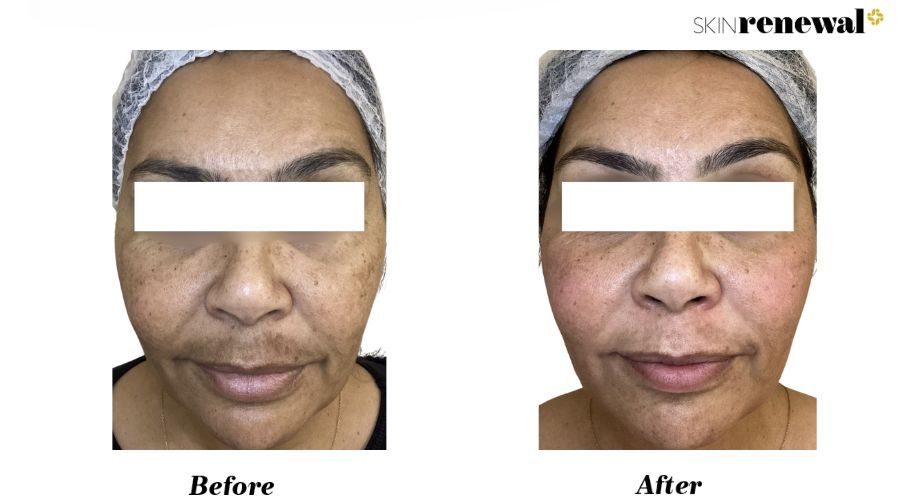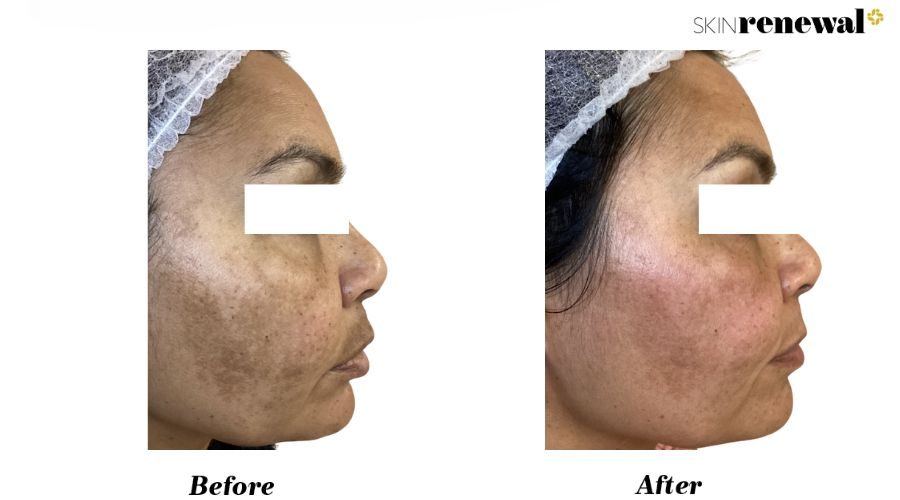As the demand for aesthetic procedures among darker skin types continues to rise, Skin Renewal offers safe and effective solutions tailored to our patient's unique needs. Our advanced treatments utilise cutting-edge lasers that are colour-blind and less invasive, ensuring optimal results with minimal risk.
Melasma, a common concern among South African women with darker skin tones, requires specialised care due to its dynamic nature and hormonal influences. Our comprehensive approach to melasma management combines in-clinic treatments with targeted topicals and supplements to address internal triggers and maintain long-term results.
Understanding the underlying causes of Hormonal Pigmentation/Melasma in dark skin types is crucial for effective treatment and management. UVA rays, known to stimulate melanin production, can penetrate car window glass, exacerbating pigmentation concerns. Changes in hormonal levels, particularly elevated estrogen levels from factors like birth control pills or pregnancy, are linked to triggering and worsening melasma. Even after discontinuing contraceptives, pigmentation may persist for years.
Post-pregnancy, melasma typically resolves within months but can persist indefinitely. Additionally, activities causing intense heat to the face, such as steam showers or sun exposure, trigger inflammation, further stimulating melanin production.
While more prevalent in individuals with darker complexions due to heightened sun exposure in South Africa, melasma can affect individuals of any race. Although commonly observed in young women, men can also experience melasma.
Skin Renewal addresses these underlying factors with targeted treatments to manage Hormonal Pigmentation/Melasma in dark skin types effectively.
Types of Pigmentation
Skin Pigmentation Disorder | Description | Common Triggers | Affected Areas |
Freckles (Ephelides) | Small, flat brown spots that appear after repeated sun exposure, especially in people with fair skin. They tend to become darker in summer and fade in winter. In fair skins and particularly blonde/red haired individuals, some are born with a predisposition for developing freckles. | Sun exposure/Genetics | Common on face, shoulders, and arms |
Age Spots (Solar Lentigines) | Flat, tan, brown, or black spots with a distinct edge that occur due to sun exposure over many years. | Prolonged sun exposure | Common on sun-exposed areas like the face, hands, and arms |
Melasma | Larger patches of brown or greyish pigmentation, often on the face. It is more common in women and can be triggered by hormonal changes. Although rare, melasma can occur in men. | Hormonal changes (e.g., pregnancy, birth control pills) | Common on the face |
Post-inflammatory Hyperpigmentation | Darker spots or patches that occur after skin injury or inflammation from conditions like acne, eczema, or lupus. | Skin injury or inflammation | Can appear anywhere on the body |
Albinism | A genetic condition resulting in little or no pigment in the skin, hair, and eyes due to lack of melanin production. | Genetic mutation | Entire body |
Vitiligo | Patchy loss of skin pigmentation, resulting in irregular white patches on different areas of the body. It is an autoimmune disorder where melanocytes are destroyed. | Autoimmune disorder | Can appear on different areas of the body |









